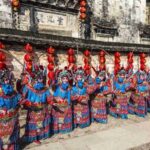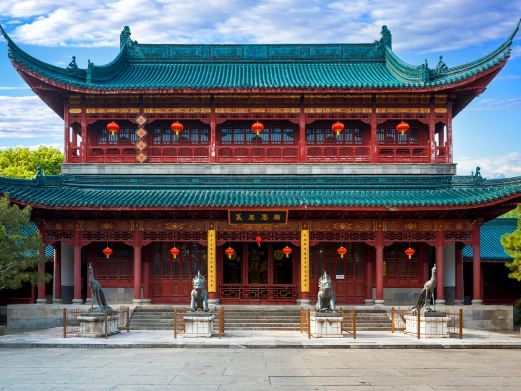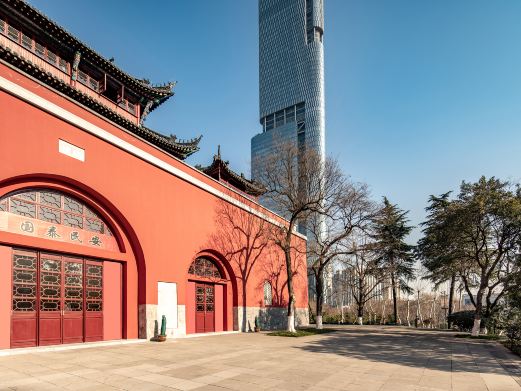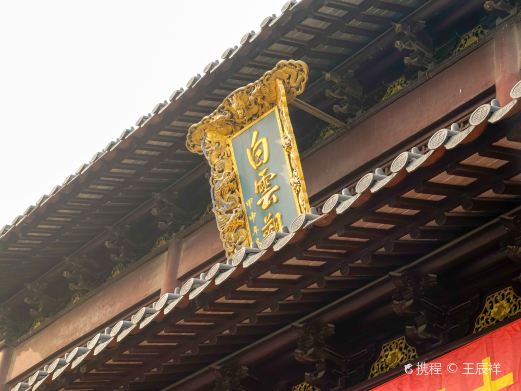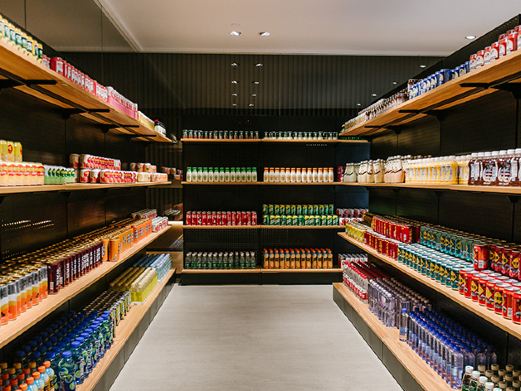Nanjing Yuejiang Tower is located on the top of Lion Mountain on the south bank of the Yangtze River. The moat surrounds Lion Mountain. Yuejiang Tower imitates Ming Dynasty architecture, with red pillars and a golden glazed tile roof, which is bright and dazzling. Ascending Yuejiang Tower and looking into the distance, the vast scenery of the Yangtze River is unobstructed, making people feel relaxed and happy.
Historical background: The original intention of building Yuejiang Tower began more than 600 years ago with Zhu Yuanzhang, the founding emperor of the Ming Dynasty. Because before Zhu Yuanzhang ascended the throne, he commanded tens of thousands of ambush soldiers on Lion Mountain and defeated the strong attack of 400,000 troops of his powerful enemy Chen Youliang, laying the foundation for him to establish the Ming Dynasty.

Appearance and decoration: Yuejiang Tower is 52 meters high, with four visible floors and three hidden floors, totaling seven floors. Each floor has displays related to the Ming Dynasty. Although they are also newly arranged in modern times, items like the mahogany dragon chair on the first floor, the giant porcelain painting of Zheng He’s voyages to the Western Seas on the third floor, and the golden dragon carved from a whole camphor wood on the ceiling of the fourth floor make the tower quite magnificent. Standing upstairs on a fine day, the Yangtze River in the north, Nanjing Yangtze River Bridge, Zijin Mountain (Mount Zhong) in the southeast, and the city view of Nanjing can all be seen. The Yangtze River is reflected into golden red by the setting sun, adding a bit of tenderness.

Tianfei Palace and Jinghai Temple: Tianfei Palace and Jinghai Temple are outside the gate of Yuejiang Tower scenic area. At first, they were both built by Emperor Yongle of the Ming Dynasty to pray for the success of Zheng He’s voyages to the Western Seas. However, what we see now are all modern reconstructions. Tianfei Palace can be visited casually. Jinghai Temple was also the place where the humiliating ‘Treaty of Nanjing’ was signed in modern times. You can visit Zheng He Memorial Hall and Nanjing Treaty Historical Materials Museum. The Tianfei Palace stele in the temple is a genuine antique.

Opening hours: Open all year round from 08:00 to 17:00; open from 08:00 to 18:00 on Labor Day.
Nursing Room: The park is equipped with a caring nursing room for mothers and infants. Dining: The park features restaurants located near the park’s south gate and at the park entrance, with prominent signs indicating their locations.

